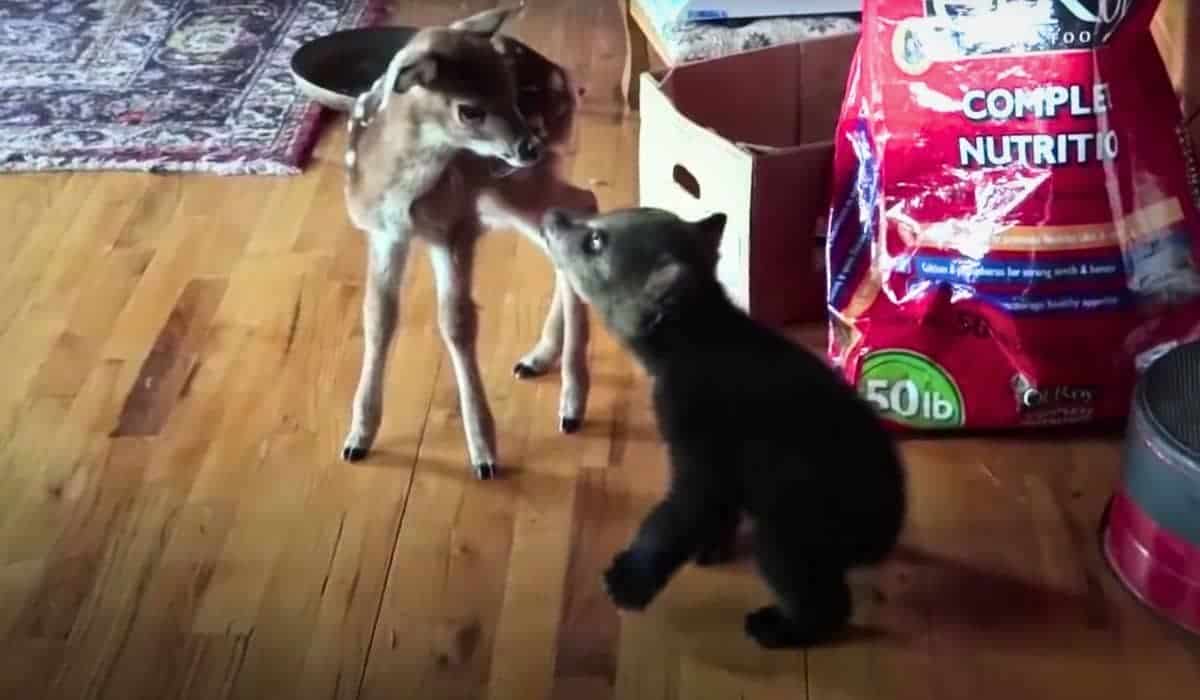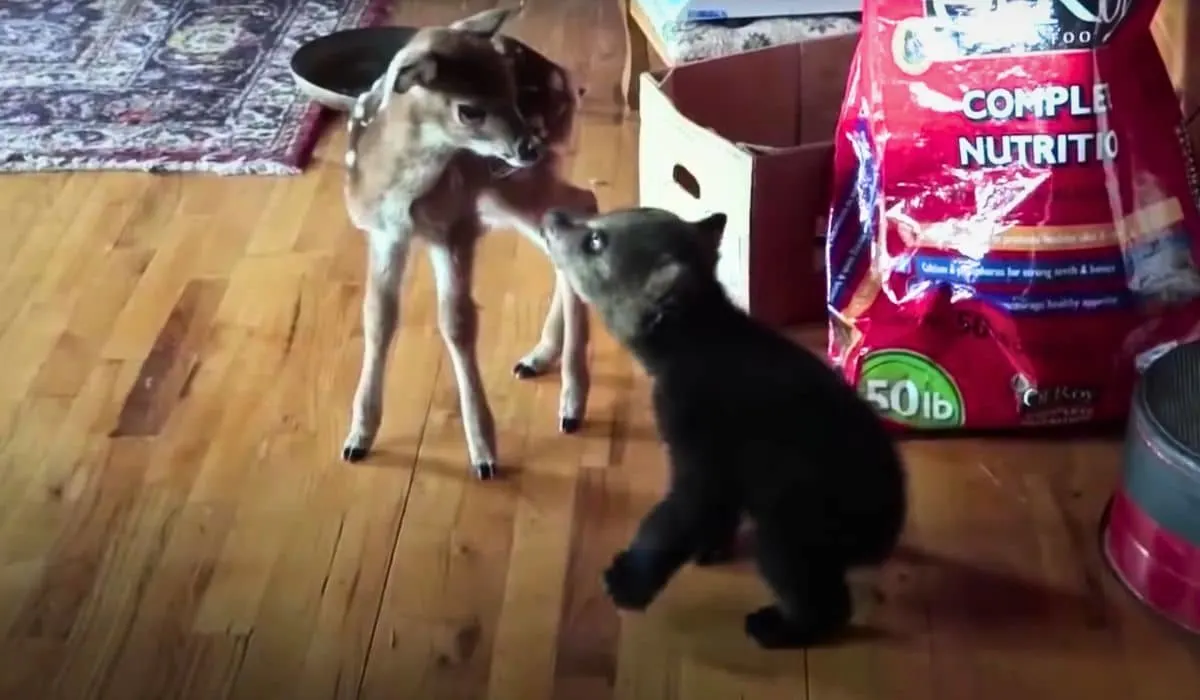This baby bear inspects a potential bestie – a baby deer. This unusual meeting is almost too cute to bear!

As we navigate through a narrative that unfolds in a homely setting, we witness the coming together of two distinct creatures, a baby bear and a deer. What could be cuter?
Other than relishing in this cute duo, we’ll also give you some insights into the evolutionary and psychological aspects that make us find baby animals irresistibly cute.
The Unbearable Cuteness of Any Baby Animal
Baby animals, with their innocent eyes and clumsy movements, have a universal appeal. In the video, the baby bear and baby deer embody this cuteness to the fullest. Their tiny stature and curious nature are evident as they explore their surroundings and each other.
We’re Programmed To Find Babies Cute
Humans inherently find the babies of mammals adorable, a phenomenon deeply rooted in evolutionary development. This “cuteness” factor, characterized by large heads, big eyes, and small mouths relative to body size, serves a vital purpose.
This is especially try for species whose offspring are not immediately self-sufficient.
It acts as an evolutionary trigger, reminding us of the importance of nurturing the young for the survival of the species.
This instinct to protect extends beyond our own offspring. It encompasses young animals with similar features, fostering a universal affection and protective instinct towards them, ensuring their survival and the continuation of the species.
Bear Inspects Baby Deer: The Video
In the cozy confines of a living room, a remarkable interaction unfolds between a baby deer and a baby bear, capturing the essence of innocence and curiosity.
The bear, evidently more intrigued, attempts to stand on its hind legs, trying to get a closer look at its new acquaintance.
Despite its initial hesitance, the deer too, succumbs to its curiosity. Eventually, she leans in to sniff the baby bear, a gesture that seems to signify approval and acceptance.
Are Deer and Bears Natural Enemies?
In the wild, bears and deer don’t naturally cross paths often. Bears are generally omnivores, with a diet consisting of a variety of foods, including berries, insects, and occasionally, small mammals.
Deers, being herbivores, graze on a different plane, focusing on plants and fruits.
While bears might prey on deers in certain circumstances, it is not a common occurrence. This video showcases a rare moment of peaceful interaction between the two species, breaking the stereotypes associated with their relationship.
The Curiosity of Baby Bears

Baby bears are known for their curious nature. In their early years, they are eager to explore the world around them, learning and adapting to their environment.
This video perfectly captures the essence of a baby bear’s curiosity, as it ventures close to the deer, examining it with a sense of wonder and innocence.
Why Do Bears Walk On Their Hindlegs?
Bears are capable of walking on their hind legs, a skill that is not commonly observed in the wild. This behavior is usually a result of them trying to get a better view of their surroundings or to reach food sources that are higher up.
In the video, the baby bear utilizes this ability to approach the deer, displaying a level of intelligence and adaptability that is characteristic of the species.
Baby Bear Inspects Deer: Conclusion
With this story, it becomes evident that the world is full of wonders waiting to be discovered.
Through the lens of evolution and psychology, we gain a deeper understanding of the universal appeal of baby animals and the nurturing instincts that bind us all.
Thank you for reading this article about the baby bear that inspects a baby deer! For more adorable deer-content, look no further:
- Curious Giraffe Inspects Baby Deer
- Watch: Cat Playing with a Deer in Yard
- Loving Deer Licks His Cat Companion
- Baby Bear Rescued by Pilot and Now Lives at the Airport - May 2, 2024
- 9 Mind-Blowing Facts About Parrots In Case You Doubt Their Intelligence - May 1, 2024
- Hero Dog Leads Owner to Baby Bear in Need of Rescue - April 30, 2024


